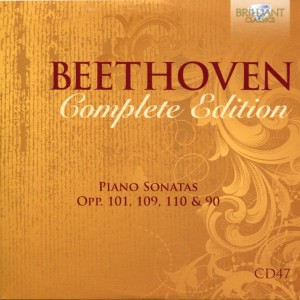 More exquisite Alfred Brendel performances.
More exquisite Alfred Brendel performances.
More gorgeous Beethoven Piano Sonatas.
Beethoven’s symphonies notwithstanding (which I revere above all), I enjoy his piano sonatas more than all of his other compositions – combined.
Solo piano, especially in the hands of someone as gifted as Alfred Brendel, is almost always magic to my ears.
But these Beethoven piano sonatas are especially wondrous.
And so is this recording, which was made in 1962-64. Yet, it sounds as fresh as if it were performed yesterday.
Here’s what I was privileged to hear today:
Piano Sonata No. 28 in A Op. 101
From its entry on Wiki:
Ludwig van Beethoven’s Piano Sonata No. 28 in A major, Op. 101, was written in 1816 and was dedicated to the pianist Baroness Dorothea Ertmann. This piano sonata runs for about 20 minutes and consists of four movements:
The Piano Sonata No. 28, Op. 101 is the first of the series of Beethoven’s “Late Period” sonatas, when his music moved in a new direction toward a more personal, more intimate, sometimes even an introspective, realm of freedom and fantasy. In this period he had achieved a complete mastery of form, texture and tonality and was subverting the very conventions he had mastered to create works of remarkable profundity and beauty.[citation needed] It is also characteristic of these late works to incorporate contrapuntal techniques (e.g. canon and fugue) into the sonata form.
Beethoven was 46 when this was composed.
Piano Sonata No. 30 in E Op. 109
From its entry on Wikipedia:
Ludwig van Beethoven’s Piano Sonata No. 30 in E major, Op. 109, composed in 1820, is the antepenultimate of his piano sonatas. In it, after the huge Hammerklavier sonata, Op. 106, Beethoven returns to a smaller scale and a more intimate character. It is dedicated to Maximiliane Brentano, the daughter of Beethoven’s long-standing friend Antonie Brentano, for whom Beethoven had already composed the short piano trio in B flat major WoO 39 in 1812. Musically, the work is characterised by a free and original approach to the traditional sonata form. Its focus is the third movement, a set of variations that interpret its theme in a wide variety of individual ways.
No. 30 Op. 109 nearly brings tears to my eyes, especially the plaintive Movement III (“Tema con variazioni”).
But Movement I (“Vivace ma non troppo – Adagio espressivo”) is just plain gorgeous, too. So expressive, dynamic, yet haunting. This is exceptional music.
Beethoven was 50 was he composed this masterpiece.
Piano Sonata No. 31 in A Flat Op. 110
From its entry on Wiki:
The Piano Sonata No. 31 in A-flat major, Op. 110, by Ludwig van Beethoven was composed in 1821. It is the central piano sonata in the group of three opp. 109–111 which he wrote between 1820 and 1822, and the thirty-first of his published piano sonatas.
The sonata is in three movements. The moderato first movement in sonata form, marked con amabilità, is followed by a fast scherzo. The finale comprises a slow recitative and arioso dolente, a fugue, a return of the arioso lament, and a second fugue that builds to an affirmative conclusion.
Beethoven was 51.
Piano Sonata No. 27 in E minor Op. 90
From its entry on Wiki:
Ludwig van Beethoven’s Piano Sonata No. 27 in E minor, Op. 90 was written in the summer of 1814 —Beethoven’s late Middle period— and was dedicated to Count Moritz von Lichnowsky.
The first movement is written in a 3/4 tempo, sounding mysteriously agitated and restless, described by Beethoven as ‘a contest between the head and heart’, based on the situation of the Count deciding whether he should marry a young Viennese dancer. It starts out with powerful chords, responded by more subdued material. The falling semitone, particularly the G-F sharp, dominates the first and second subject groups, and most of the episodic work between.
The second movement, a rondo in the tonic major, however, quiets down into a beautiful melody with a 2/4 rhythm. The two contrasting movements suggest an agitated situation calmed by restful contentness. Notably, Beethoven uses German tempo marks for both movements.
English composer Bramwell Tovey characterized the movement as one ‘full of passionate and lonely energy’. This contrasting gesticulation of emotion is especially evident in the piece’s discernible dialogical form, where the head exposes an idea which is thereafter disputed by the heart.
Beethoven was 44.
Some of these sonatas sound very Chopin like, all emotional and melodic. Others sound like jazz improvisation.
They are all worth hearing. And owning. Get thee to Brilliant Classics immediately!
